Autumn in kindergarten: experiment with natural materials.
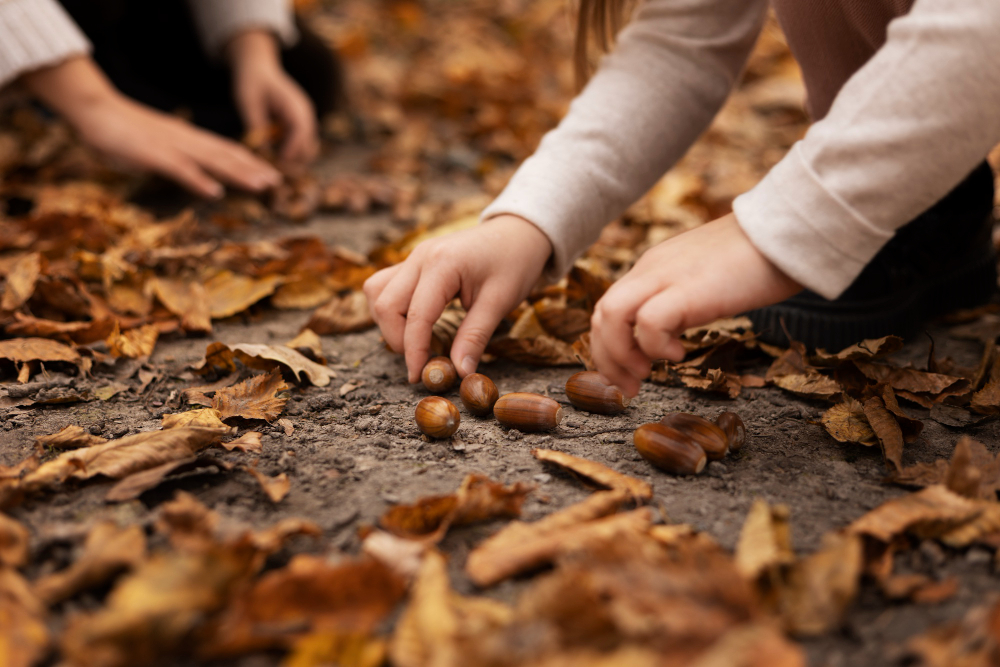
Leaves of all shapes and colors but also twigs, cones, feathers, grass, corn, earth...
They are all different materials, which speak of autumn to the boys and girls in kindergarten.
Autumn and nature at kindergarten.
Every year, at the kindergarten, we live the cycle of the seasons with interest and curiosity.
Children are physically involved in changing weather conditions and the change of the seasonal cycle: colors, smells, sounds, sensations, even flavors, everything that characterizes a given moment, intrigues them and involves.
Banally: if it rains you can not go out in the courtyard, but if I open the window and turn off the light during a shower, everyone stays with their breath to listen to the rain, sounds, smell, changing light... The silence falls and in a moment, we are projected into an almost magical atmosphere.
This is because children are much more sensitive to contact with nature than adults and in their totality, they are fascinated and involved in everything that brings them closer to the world around them.
For all these reasons, autumn offers wonderful ideas and many materials to work at the kindergarten.
Activities with natural materials for kindergarten.
Exploration, discovery and collection of natural materials.
The first step in working with nature and its materials is to explore the external environment to observe it and find out what it has to offer.
If the kindergarten is equipped with a sufficiently rich garden, it is possible to carry out this activity directly at school with the advantage of doing it all together; If this is not feasible, families can be asked to collect materials during a walk and then take them to school for sharing.
Both hypotheses work very well, I go like this:
- If I choose to propose the collection to families, I prepare a small accompanying note to be completed by parents, together with children, with indications such as: where we collected the materials, when, with whom, what we saw interesting, who we met. The track with the answers to these simple questions, promotes the subsequent conversation in the group and allows you to recall the experience more clearly, even for the youngest children.
- If I choose instead to propose the collection in the garden of the school, I do it by providing each boy and girl with an individual container, in which to put the little treasures discovered and collected. This activity should be proposed calmly, to leave time for everyone to explore the space and observe all that the garden has to offer. It is a very pleasant and fun experience, because the curiosity and wonder that are drawn on children’s faces, tell how being in contact with nature enriches them. It makes you smile then, see that for someone, all the work of collection is resolved in an empty container, because not kept well in balance, but this also teaches a lot and is valuable.
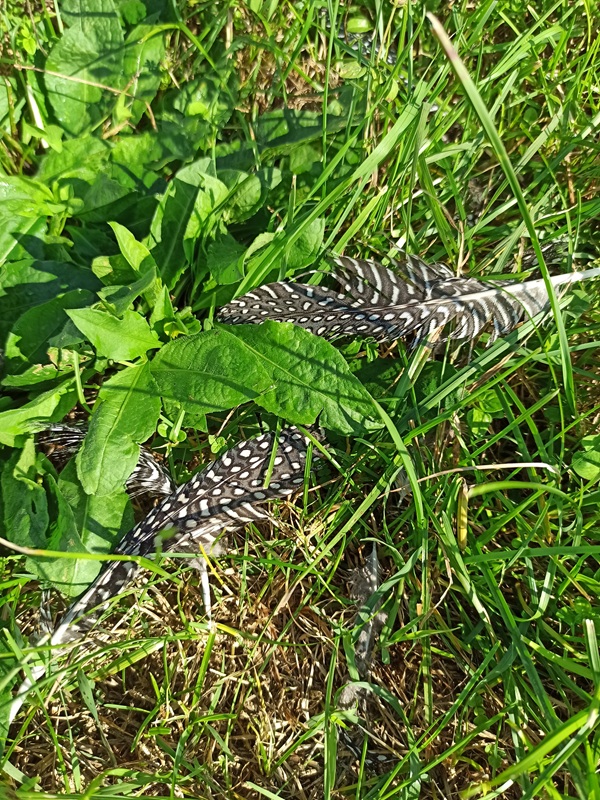
Once all the materials are collected, they can not only be observed and studied in their colors, shapes and textures, but also counted, catalogued, serialized, subdivided into sets.
Allowing children to play freely with what they collect, you can also discover endless ways to manipulate and group.
Autumn materials and the mud kitchen.
The experience for which my children and I are crazy, the one for which it is not necessary to dwell in explanations, which amuses, involves and excites everyone, the one that makes discover the essence of my way of working and makes understand, even to the newcomers, What focuses our experience is the mud kitchen.
Work outdoors on the materials, using some small tools and adding water.
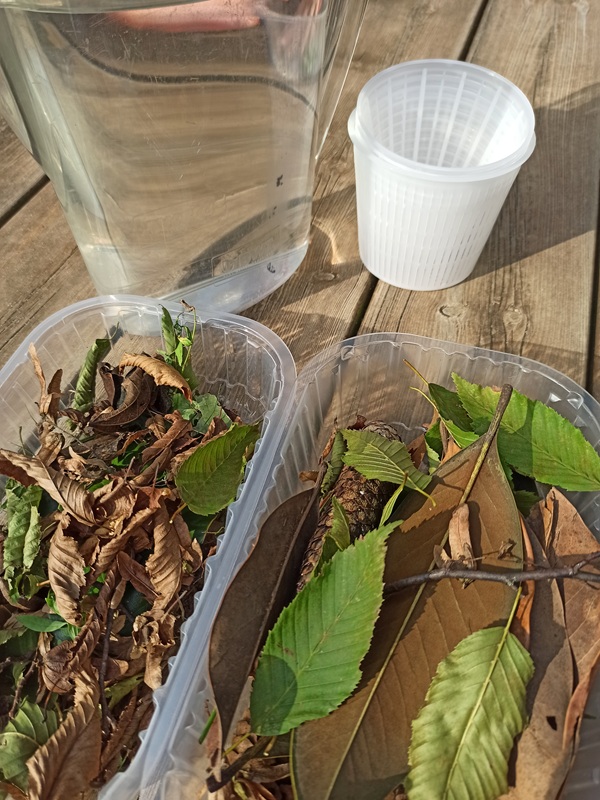
It is a game that many adults have done as children, but which today is less and less common and worth proposing to the kindergarten, because for children it is an extremely natural way of investigating materials and using hands, eyes and thought.
When I propose the mud kitchen at school, I usually provide first, few and simple rules of engagement: avoid splashing friends and wet clothes and use water knowing that once you have used up the given amount, you are left without.
Simple but effective: the children manipulate without making big mess, attentive to their little treasure made of leaves, twigs, flowers, stones, water and who has more, put more.
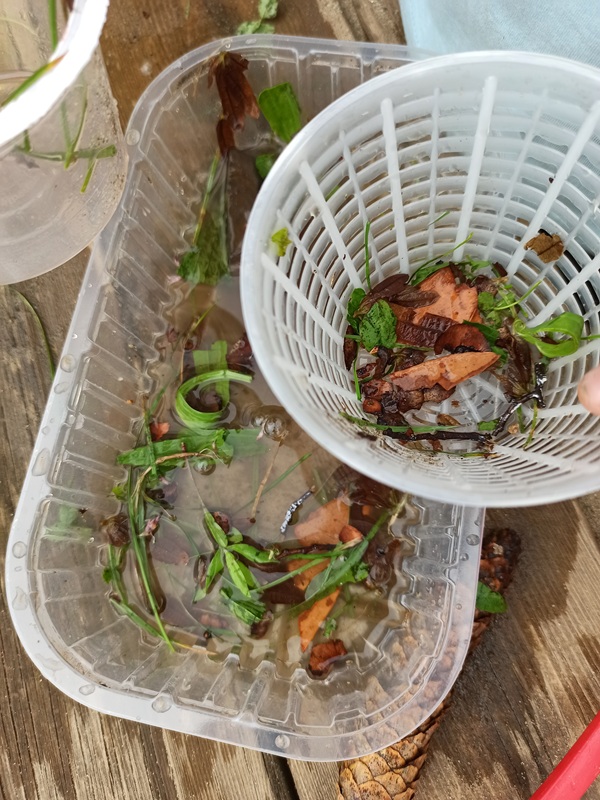
Crumbling, tearing, crushing, pushing, pressing, beating, pulling, mixing, emptying, filling, are all actions that children do with great pleasure and that you can observe with them living the experience of the mud kitchen.
Once the activity is finished, there is another fun part that consists in cleaning the used material: I always do it together with the children so that they get used to not taking others' help for granted and learn to manage their material and the tools they have used, from beginning to end.
For cleaning, once deposited the leftovers of the activity in a special corner of the garden, will be enough a basin of water, to let everyone can rinse their dishes and containers.
Portrait of the tree live, autumn activity at kindergarten.
Autumn is made up of beautiful days in which to stay outdoors with peace, but I love to do activities outside even on days not particularly favorable.
If the weather conditions allow, even on a cloudy day or after rain, you can work outside.
Well covered and with the use of a plastic cloth on which to sit, children can experience autumn in a more intense and pleasant way than with so many abstract speeches of adults.
One of the most challenging activities, even if for us adults it seems a simple and obvious thing, is to ask children to make the portrait of a live tree.
Choosing a tree, looking at its shape and colors, trying to draw it, are all very demanding activities, if the group is not used to working outdoors, It may happen that some children are distracted or lost in the difficulty of managing physical but also mental space and material.
If so, it is worth repeating this activity several times over time, with different subjects or at different times and seasons.
The materials required for this activity are:
- a square of tarpaulin to request at the beginning of the year, useful for all outdor activities and on which children can sit to stay dry
- or alternatively, a plastic sheet on which to sit them all together
- a rigid support on which to rest the sheet so that you can draw without difficulty
- a pencil and two or three colored crayons.
Usually to make the portrait of the tree or otherwise drawings outdoors, I ask boys and girls to draw first with the pencil, to allow them to capture and reproduce the details more precisely, only later can they proceed with the coloring and also here, I ask you to look carefully at the nuances and the fact that in nature colors are often not high contrast but rather mixed and muted.
Creation of Mr Autumn: leaves, twigs, paper and glue, resources to create at the kindergarten.
Always using natural materials, autumn, collected in the garden, I proposed to children to create a simple puppet, also using small bags for bread, recycled.
So was born Mr Autumn, who came to visit us at the kindergarten.
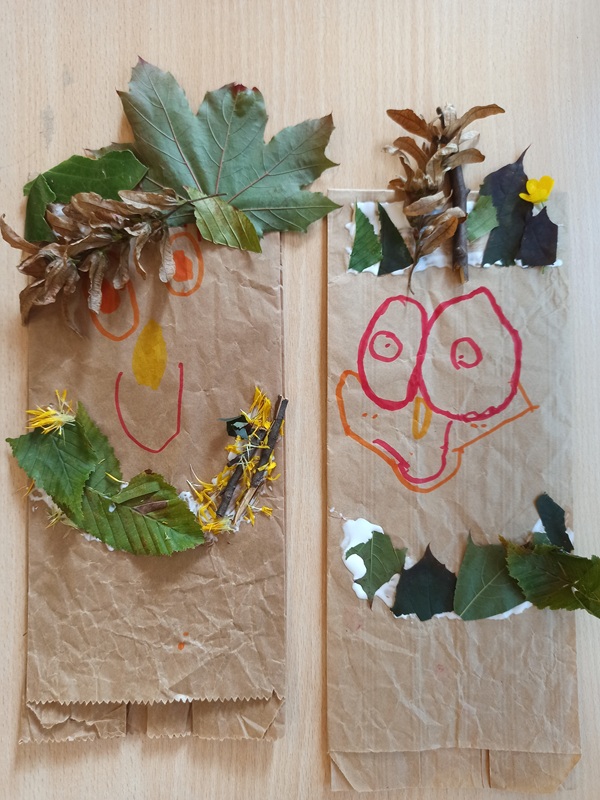
Using markers, the boys and girls drew on their paper bags the face of the character, adding different details.
Only once the face is finished, they have gone to add beard and hair, made with natural materials and glued with a good amount of PVA glue.
The result was pleasant and allowed the children, once brought home, to use the puppet to tell the parents also all the other discoveries and experiences, lived on the autumn.
Leaves to be printed at kindergarten.
Frottage and leaf printing are a common activity in all kindergartens.
This year I have chosen to propose it in a slightly different way, using the solid tempera in stick.
This material is very rewarding, for the intense and vibrant colors that leave on the sheet a strong and much more defined trace than that of the normal tempera, so that to children the product seemed almost magic.
The actual printing activity with the leaves was preceded by a work of selection and cataloging by the children, carried out on my instructions.
I offered them a good amount of leaves with different characteristics, in sufficient quantity for all, then I asked to look in the pile, from time to time, different leaves: thin, with three points, serrated, yellow, brown, red, long, large and so on.
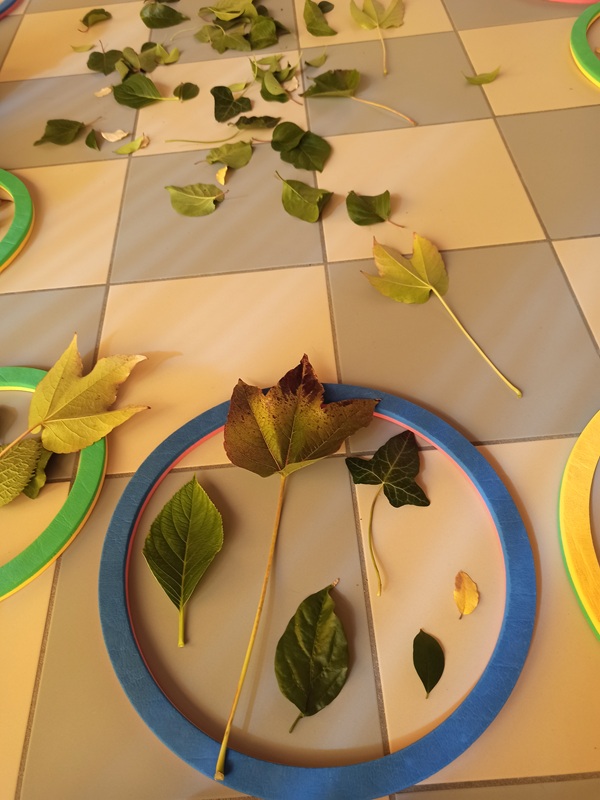
Only after searching and finding the leaves could each child use them to print, first on their own sheet of paper and then on a shared poster.
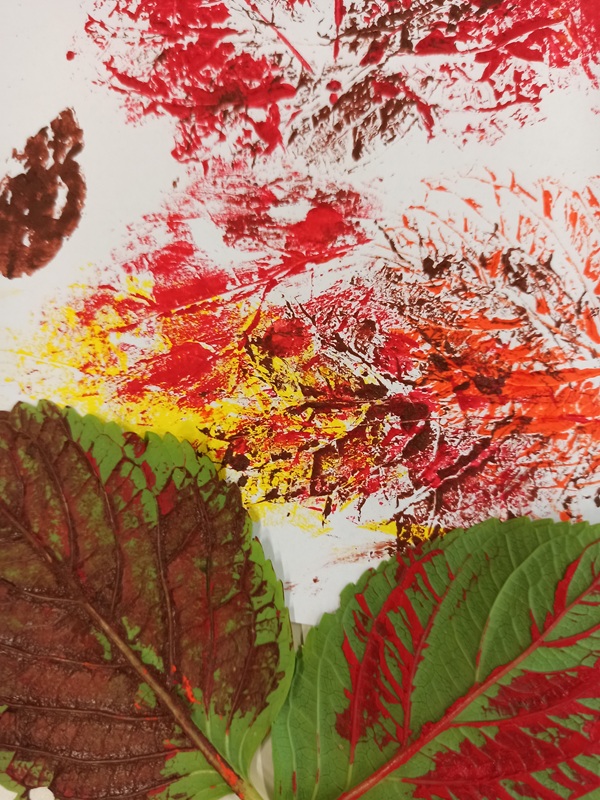
Here and there we added the frottage, a technique that allows to bring to light the texture of a surface, overlaying a sheet of paper and using a wax pastel to bring to light the underlying texture.
Also this activity made with simple leaves and a crayon, engages the children and amazes them with the result that comes to light.
These are just the activities carried out these days, using natural materials, but autumn has only just begun and at the kindergarten there is still a lot to discover and explore.
Designed by Freepik


